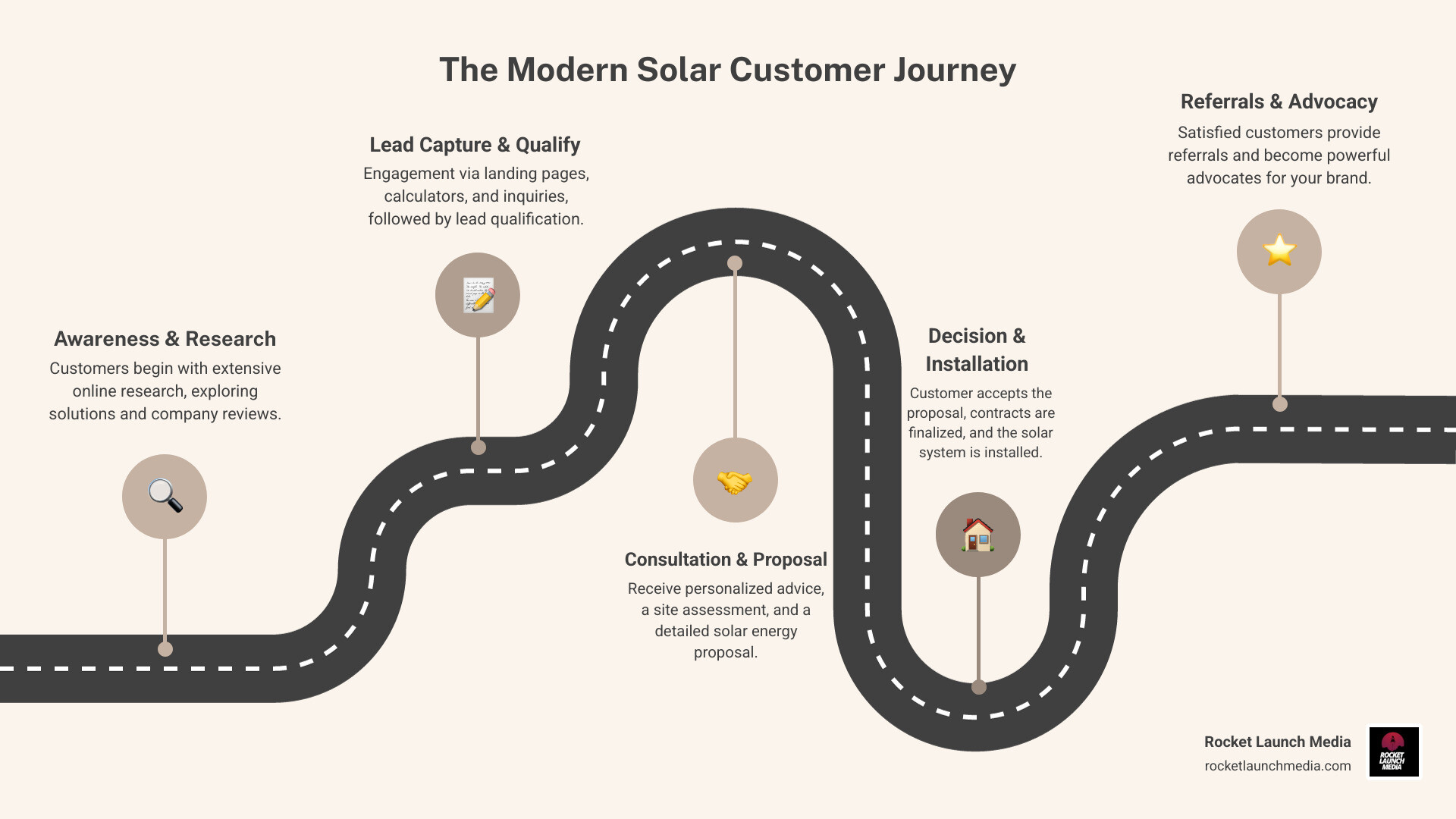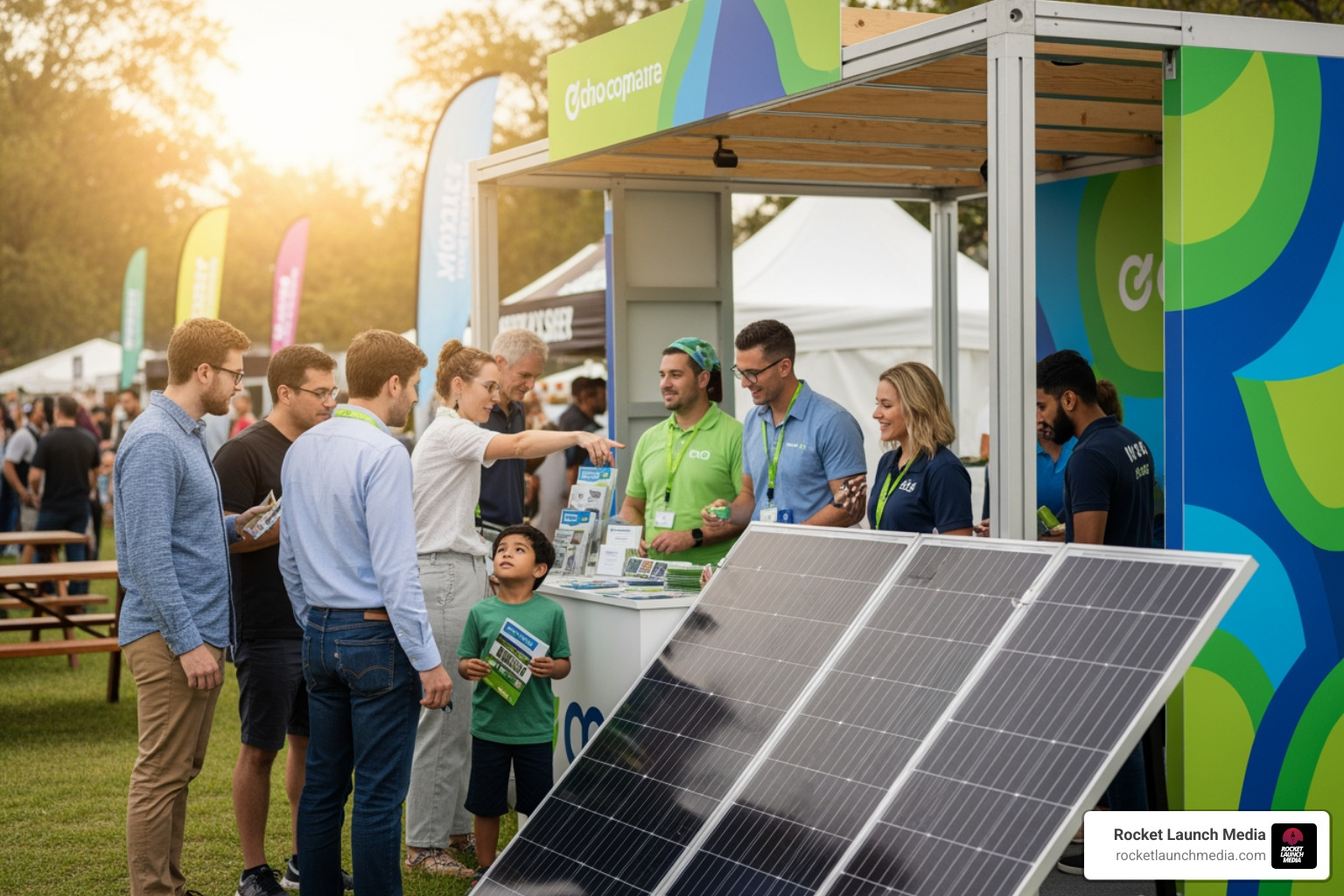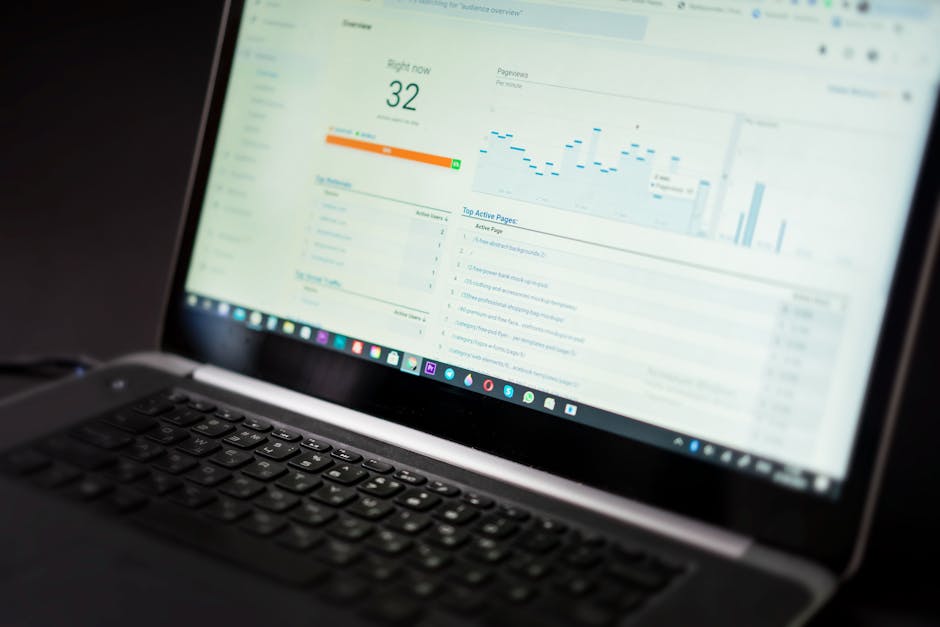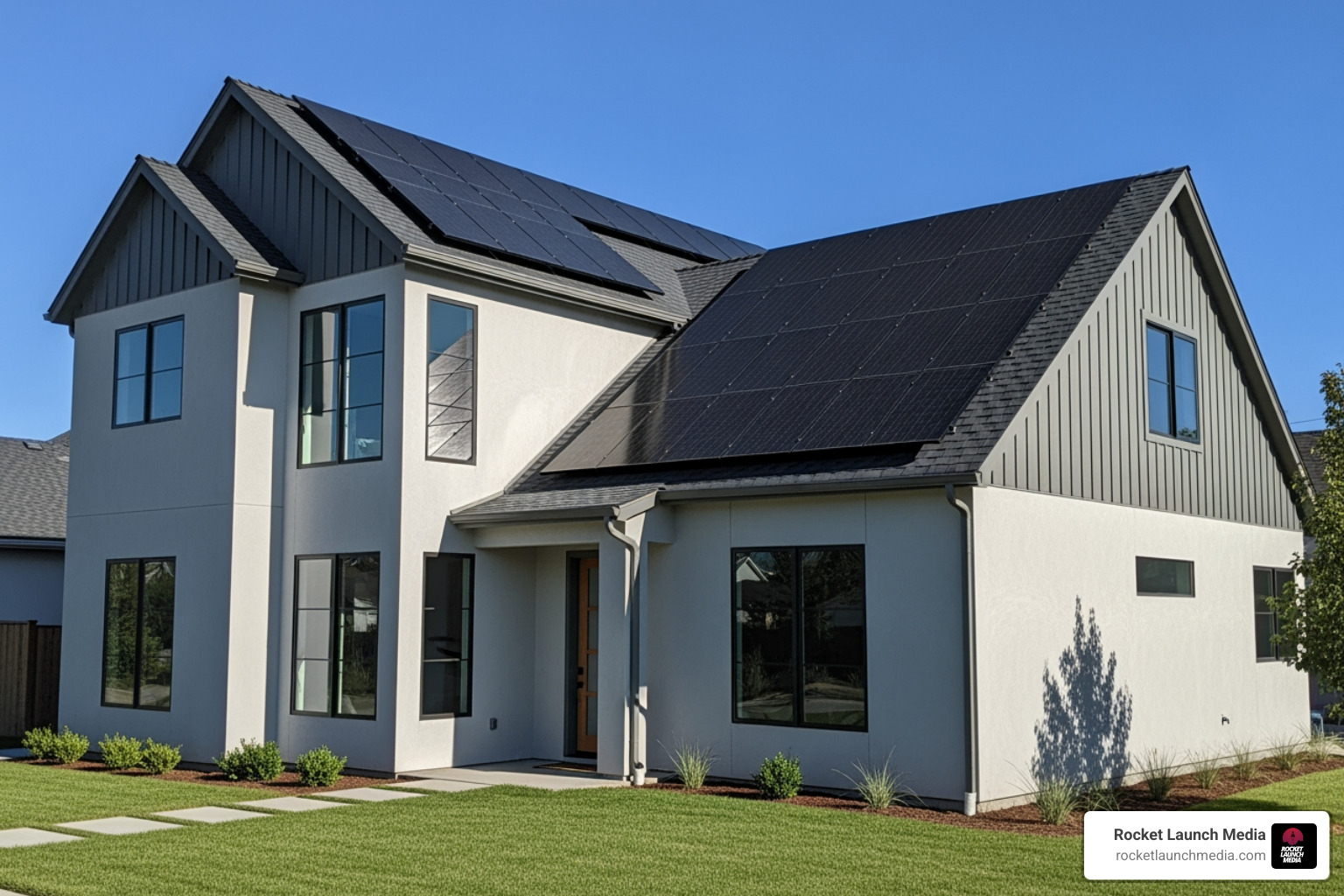Why Solar Lead Generation Campaigns Matter More Than Ever
A solar lead generation campaign is a strategic marketing initiative designed to attract, capture, and convert potential customers interested in solar energy solutions. These campaigns use digital channels like SEO, paid ads, content marketing, and referrals—along with traditional methods like direct mail and canvassing—to build a pipeline of qualified prospects ready to move through the sales funnel.
Key components of an effective solar lead generation campaign include:
- Digital Marketing: SEO, content marketing, Google Ads, and social media advertising
- Local Targeting: Geographic and demographic focus on high-potential markets
- Lead Capture Tools: Landing pages, savings calculators, and instant response systems
- Nurturing Systems: Email automation, CRM integration, and follow-up sequences
- Performance Tracking: Cost per lead (CPL), conversion rates, and customer acquisition cost (CAC)
The solar industry is booming—nearly 50 GWdc of capacity was installed in the U.S. in 2024 alone, a 21% increase from 2023. But this growth comes with a catch.
Competition has never been fiercer. With over 3,000 solar companies competing for attention in the U.S., customer acquisition costs have skyrocketed. The average cost per lead now sits around $206, and in some markets, acquiring a single customer can cost up to $10,000—roughly 25% of a typical installation’s value.
At the same time, the solar customer journey has evolved dramatically. Today’s buyers conduct extensive online research, read an average of 7 reviews before trusting a company, and expect instant responses when they reach out. In fact, 78% of solar customers choose the first company that responds to their inquiry, and contacting leads within 1 minute can boost conversion by nearly 400%.
The stakes are high, but so is the opportunity. Companies that master modern lead generation strategies—combining digital channels, speed-to-lead optimization, and relationship-building tactics—are thriving despite the competition.
This guide walks you through proven strategies to build a consistent, cost-effective solar lead generation campaign that fills your pipeline with qualified prospects and keeps your sales team busy.

Key Strategies for Your Solar Lead Generation Campaign
The solar market in 2025 isn’t for the faint of heart. With thousands of companies competing for the same homeowners and businesses, you can’t just throw marketing tactics at the wall and hope something sticks. You need a thoughtful, strategic approach that combines the best of inbound and outbound marketing, leverages both cutting-edge digital channels and time-tested traditional methods, and above all, focuses on attracting high-quality leads while building genuine relationships.

The biggest challenges we see solar companies wrestling with today? The sheer volume of competition, skyrocketing customer acquisition costs, and the constant pressure to differentiate your brand in an increasingly crowded marketplace. On top of that, the solar customer journey has evolved dramatically. Today’s homeowners aren’t picking up the phone after seeing one ad. They’re conducting extensive online research, comparing multiple companies, reading reviews, and taking their time before they’re ready for a sales conversation.
This means your solar lead generation campaign needs to be more sophisticated than ever. It’s not just about volume—it’s about education, trust-building, and being there with the right message at exactly the right moment.
Planning Your Solar Lead Generation Campaign: Building Direct Relationships
When it comes to filling your sales pipeline, you essentially have two paths: generating your own leads or buying them from external providers. At Rocket Launch Media, we’ve seen both approaches in action, and here’s what we know for certain—generating your own leads and building direct relationships with prospects is hands-down the superior strategy.
Why? Because when you generate your own leads through SEO, content marketing, and referrals, you’re attracting people who are genuinely interested in your company. They’ve found you through their own research, they trust your brand, and they’re not simultaneously talking to five other solar companies who bought the same lead. This alignment with your brand values and quality standards translates directly into stronger conversion rates and happier customers.
Let’s look at the real numbers:
| Feature | Generating Your Own Leads (Organic/Inbound) | Relying on External Sources (Purchased Leads) |
|---|---|---|
| Pros | – Higher quality leads, genuinely interested – Builds brand trust and authority – Lower long-term CPL and higher ROI – Exclusive leads, less competition – Direct relationship from the start | – Instant lead volume – Can fill pipeline quickly – Less effort in initial lead generation setup |
| Cons | – Requires upfront investment in content/SEO – Takes time to build momentum and rank – Needs consistent effort and optimization | – Lower quality leads, often less engaged – High competition (leads often sold multiple times) – Higher CPL in the long run due to low conversion – Damaged brand reputation if leads are spammed – Can be expensive ($25-$150+ per lead; $200-$500 for booked appointments) |
| Conversion Rates | – Referrals: ~29-37% (exceptional!) – Inbound web leads: 10-20% – SEO-driven: High potential for long-term conversion | – Typically 5-8% (often lower for multi-sold leads) – Top sales teams close under 12% |
| Cost | – SEO/Content CPL: ~$196 (once established, can be much lower over time) – Referrals CPL: Near $0 (excluding rewards) | – ~$25-$150+ per lead – Booked appointments/live transfers: $200-$500 |
The difference is striking. Purchased leads typically convert at only 5-8%, and even the best sales teams struggle to close more than 12% of them. Meanwhile, referrals—the gold standard of self-generated leads—convert at nearly 30%. That’s the power of building trust and direct relationships from day one.
Of course, generating your own leads requires a bit more work upfront. The first step is understanding exactly who you’re trying to reach. This means crafting detailed buyer personas using demographic information like income, age, homeownership status, and location. Resources like the U.S. Census are invaluable for investigating the specifics of communities in your service areas—whether that’s Youngstown, Cleveland, Columbus, Cincinnati, Las Vegas, Atlanta, Charlotte, Houston, or anywhere else you operate.
Once you’ve defined your ideal customer, you’ll be able to tailor your messaging, choose the right channels, and speak directly to their concerns and motivations.
It’s also crucial to distinguish between residential and commercial solar leads right from the start. These are two completely different animals. Residential leads typically convert within 6-9 months and are motivated by personal savings, environmental concerns, and increasing their property value. Commercial solar sales, on the other hand, can take 12 months or longer to close. They involve complex financial analyses, multiple decision-makers, regulatory considerations, and a much deeper dive into ROI and operational costs.
You need separate strategies, messaging, and content for each segment. That might mean creating dedicated sections on your website specifically for commercial buyers, addressing their unique concerns about energy independence and long-term financial benefits.
Finally, don’t forget about lead qualification criteria. Not every homeowner or business is a good fit for solar, and that’s okay. You need clear criteria to identify prospects who are genuinely interested, financially capable, and whose properties are actually suitable for installation. For residential, this might mean homeowners with good credit, a clear unshaded roof, and specific roof materials. For commercial, you might focus on businesses with high energy consumption and long-term facility ownership.
By defining these criteria upfront, you ensure your sales team spends their valuable time on the prospects most likely to convert—not chasing dead ends.
Mastering Digital Channels for High-Quality Leads
Digital channels are the backbone of any modern solar lead generation campaign. These strategies don’t just bring in leads—they build your brand’s authority, establish trust, and create a sustainable pipeline that keeps delivering long after your initial investment.
Search Engine Optimization (SEO) and Content Marketing are arguably the most effective long-term strategies for solar companies. Think about it: about 33% of people find new products and services through search engines. When someone in Cleveland searches for “solar panel installation near me” or a homeowner in Las Vegas types “best solar companies,” you want your business showing up at the top of those results.
Local SEO is absolutely critical for solar companies. Most of your customers are within a specific geographic area, so you need to dominate local search results. Start by optimizing your Google Business Profile for each service location—make sure your information is accurate, add high-quality photos of your installations, and develop a strategy for generating and responding to reviews. Solar buyers read an average of 7 reviews before they trust a company.
You should also create location-specific landing pages for each area you serve—Columbus, Dublin, Dayton, Cincinnati, Pittsburgh, Charlotte, Houston, wherever. Each page should have unique content custom to local needs, incentives, and concerns. And make sure your Name, Address, and Phone (NAP) information is consistent across every online listing.
Don’t forget the technical side of SEO either. Your website needs to be fast—47% of users expect pages to load in under 2 seconds. It needs to be mobile-responsive, since most solar research happens on phones. Tools like Google PageSpeed Insights can help you identify areas for improvement.
Content marketing is what fuels your SEO efforts and positions you as the trusted expert. Well-executed solar content can deliver an ROI of 500% to 748%. But what kind of content actually works?
Educational blog posts that answer the questions your buyers are already asking are a great place to start. Use Google Trends and keyword research tools to figure out what people are searching for. Create articles like “How much do solar panels save in Houston?” or “Solar tax credits in Pittsburgh.”
Savings calculators are fantastic lead magnets. Homeowners are always curious about potential savings, and if you can give them a personalized estimate in exchange for their contact information, you’ve got a qualified lead.
Comparison guides help prospects understand different panel types, financing options, and local incentives. Case studies paint a real-life picture of how your services exceeded a client’s expectations—these build enormous trust. And video testimonials and explainer videos showcase real customers and explain complex topics in an engaging, visual way.
A strong SEO strategy can yield an ROI close to 30x over time, driving organic leads at an average cost around $196 each—and that cost goes down the longer your content ranks.
When you need immediate visibility and high-intent leads, paid advertising (PPC) is your best friend. Google Search Ads allow you to target high-intent keywords like “solar installation near me” or “cost of solar panels Atlanta.” Google Ads typically have a cost-per-click of $3-10 for solar keywords, with conversion rates of 5-15%, resulting in a cost per lead of $100-300 in competitive markets.
To maximize your ROI, target your ads based on your buyer personas, use negative keywords to filter out irrelevant searches, craft compelling ad copy that speaks directly to pain points, and send traffic to dedicated landing pages designed specifically for conversion. Regularly monitor your performance and use tools like Google Ad Auction Insights to understand what your competitors are doing.
Facebook and Instagram Advertising are excellent for reaching a broader audience with precise demographic and interest-based targeting. Facebook Ads can deliver leads for $20-100, often in the $30-50 range. With 302 million social media users in the U.S. and a 90% penetration rate, these platforms are too powerful to ignore.
Use visual storytelling to showcase beautiful installations, customer testimonials, and the benefits of solar through engaging videos and images. Target homeowners in specific zip codes who are interested in home improvement, sustainability, or energy savings. And take advantage of the lead generation forms built directly into these platforms to make capturing leads as simple as possible.
The Power of Referrals and Traditional Methods
While digital channels are essential, we’d be foolish to ignore the enduring power of referrals and strategically deployed traditional methods in a comprehensive solar lead generation campaign.
Referrals and word-of-mouth are the holy grail of lead generation, and the numbers prove it. Referrals convert at an exceptional rate of nearly 30%—that’s 1 in 3 leads becoming customers. A Yale/NYU study found that for every 10 solar installs in a neighborhood, the chance of nearby homes going solar jumps by 7.8%. Why? Because 92% of consumers trust recommendations from friends or family more than any other form of marketing.
But building a powerful referral engine isn’t about luck—it’s about strategy. Systematize your referral requests by asking at key points in the customer journey: after installation, after the first utility bill shows savings, or after a positive review. Offer incentives that create a win-win situation—leading solar firms often offer around $500 per successful referral. Make it easy by providing simple ways for customers to refer, whether through a dedicated page on your website, a quick form, or even a referral card. And always show appreciation, even for referrals that don’t convert.
For B2B solar, referrals are even more powerful. 84% of decision-makers start their vendor search through a referral, and referred B2B leads are 4x more likely to buy with 69% faster sales cycles. Conversion rates for referrals can hit 35% to 50% for both residential and commercial solar, with an average ROI of around 14x.
While digital takes center stage, certain traditional outbound methods still have their place, especially for local targeting in specific neighborhoods and service areas.
Door-to-door canvassing might sound old-school, but it still works. A good canvasser might convert 1 in 10-15 homes visited into scheduled appointments, with a cost per lead typically between $20-50. This method is particularly effective in neighborhoods where you’ve recently completed installations—social proof in action. The key is proper training for your canvassers and using technology to track visits and gather information.
Direct mail can stand out when it’s well-designed and personalized. Direct mail response rates for solar mailers are around 1-2%, with a cost per lead of $50-$100. Target specific demographics and neighborhoods—homeowners with older roofs or high energy consumption in your service areas of Cleveland, Charlotte, Atlanta, or Houston.
Event marketing provides a fantastic opportunity to engage directly with potential customers and build trust face-to-face.

Whether it’s a home show in Columbus, a sustainability fair in New York, or a community festival in Houston, events let you answer questions, showcase your products, and capture leads with a cost per lead of just $10-50. Consider partnering with complementary businesses like roofing companies or home improvement contractors to generate even more valuable referrals.
The U.S. solar industry saw a 21% increase in installed capacity in 2024, but residential installations actually decreased by 32% from 2023 to 2024, according to Solar Energy Industries Association data. This shift highlights why you need diverse, adaptable lead generation strategies across all channels—digital and traditional alike.
Measuring, Optimizing, and Future-Proofing Your Campaign
You’ve done the hard work of attracting leads—now comes the critical part: understanding which ones are worth your time, what they’re costing you, and how to convert them into paying customers. This is where many solar companies stumble. At Rocket Launch Media, we believe that data-driven decisions are what separate thriving solar businesses from those struggling to keep their pipeline full. Let’s explore the metrics that matter, the mistakes to avoid, and the emerging technologies that will define the future of your solar lead generation campaign.

Essential Metrics to Track for Your Solar Lead Generation Campaign
Think of your solar lead generation campaign like a garden. You need to know which plants are thriving, which need more water, and which are just taking up space. The same goes for your leads—without tracking the right metrics, you’re essentially flying blind.
Cost Per Lead (CPL) is your starting point. It tells you exactly how much you’re spending to get each potential customer into your pipeline. Across the solar industry, the average CPL sits around $206. When we break this down further, paid channels typically run about $217 per lead, while organic channels come in slightly lower at $196. Quality solar leads can range anywhere from $20 to $200, with most averaging close to $50. These numbers give you a benchmark, but remember—cheaper isn’t always better if those leads don’t convert.
Next up is conversion rates, and this is where things get really interesting. Your Lead-to-Appointment Rate shows how many of your leads actually agree to meet with you. For referrals, you should be seeing 50% or higher (yes, really!), while leads from other sources typically convert at 20-30%. Then comes your Appointment-to-Sale Rate, or close rate. Referral leads shine here too, with a conversion rate around 37%. Inbound web leads typically convert at 10-20%. For a strong overall strategy, you’re aiming for at least 2-4% of all leads to become paying customers.
Customer Acquisition Cost (CAC) is the big picture number—the total cost of turning a stranger into a customer. Nationally, solar CAC averages about $0.43 per watt, which works out to roughly $2,580 for a typical 6kW system. But here’s the sobering reality: in many U.S. markets, CAC can approach $10,000 per sale—that’s about 25% of a typical $40,000 installation. In some competitive residential markets, you might see CAC as high as $0.9 per watt. Our mission is to drive these numbers down through smarter lead generation and higher conversion rates.
And here’s the metric that should make you sit up and pay attention: Speed-to-Lead Impact. Contacting leads within 1 minute boosts conversion by nearly 400%. Read that again. Four hundred percent. That’s not a typo. In an industry where 78% of solar customers choose the first company that responds, having a rapid response system isn’t optional—it’s absolutely critical to your success.
By monitoring these metrics across all your channels—from SEO and content marketing to PPC and referrals—you can spot patterns, identify what’s working, and shift resources to where they’ll have the biggest impact.
Common Pitfalls and How to Avoid Them
Even the most well-planned solar lead generation campaign can fall flat if you’re not careful. We’ve watched countless solar companies make these mistakes, and we’re here to help you sidestep them entirely.
The number one killer? Slow lead response time. We’ve already mentioned that 78% of solar customers go with whoever responds first, yet many companies take 5 days or longer to follow up. By then, the lead has already signed with someone else. You need automated systems and dedicated team members whose job is to jump on new leads the moment they come in—ideally within minutes, not hours or days.
Closely related is poor follow-up persistence. One attempt isn’t enough. Most leads require 5 or more contact attempts before you actually connect with them. Maybe they were busy, maybe your email went to spam, maybe they just needed time to think. The point is, if you’re giving up after one try, you’re leaving money on the table. Build a follow-up strategy that includes multiple touchpoints—calls, emails, texts—spread out over days or weeks.
Another common mistake is over-reliance on a single lead source. Imagine building your entire pipeline on Google Ads, then waking up one morning to find your ad costs have doubled or your account has been suspended. Suddenly, your phone stops ringing. A diversified approach—mixing organic, paid, referral, and traditional channels—protects you from these disruptions and keeps leads flowing consistently.
In today’s market, ignoring your online reputation is basically marketing suicide. Nearly half of buyers (49%) trust online reviews as much as personal recommendations. If you’re not actively managing your presence on Solar Reviews, Yelp, EnergySage, and Google My Business, you’re invisible to a huge portion of your potential customers. Make it a priority to solicit reviews and respond to feedback, both positive and negative.
Here’s one that might surprise you: not leveraging your existing customers. Your happiest customers are your best marketing asset, with 76% willing to refer friends and family. But they won’t do it unless you ask! Create a structured referral program, make it easy for customers to spread the word, and actively seek out testimonials and case studies.
Finally, resist the temptation of shortcuts through black hat SEO tactics. These techniques might seem like a quick win, but they violate search engine guidelines and can get you severely penalized—tanking your rankings and organic traffic overnight. We believe in building sustainable, long-term results through ethical, white-hat SEO. It takes longer, but it lasts.
The Future: AI, Automation, and Digital Door Knocking
The future of your solar lead generation campaign isn’t just digital—it’s intelligent, automated, and surprisingly personal. We’re entering an era where technology does the heavy lifting, freeing your team to focus on what humans do best: building relationships and closing deals.
AI and CRM automation are changing how solar companies generate and nurture leads. These aren’t futuristic concepts anymore—they’re tools you can use today. AI-driven platforms analyze massive amounts of data, track how consumers behave online, and even personalize your outreach messages. Some AI sales agents can now automate the entire journey, from identifying prospects to scheduling meetings, without human intervention.
Modern CRM systems take this even further. They automatically capture leads from multiple sources, score them based on conversion likelihood, and trigger personalized follow-up sequences. Email drip campaigns get 80% higher open rates and 3 times more engagement than one-off emails. Your sales team gets real-time alerts when hot leads take action, so they can jump in at exactly the right moment. This isn’t about replacing your salespeople—it’s about making them more effective.
Digital door knocking is another game-changer. Think of it as traditional canvassing, but smarter and more scalable. Instead of walking neighborhoods in the heat, you use online tools and data to identify the most promising homeowners. Google Project Sunroof helps you find homes with ideal roof conditions and sun exposure in specific zip codes. Tools like Property Radar let you narrow down financially qualified prospects and identify newly built neighborhoods without tree coverage.
Once you’ve identified these prime prospects, you reach out with highly targeted digital messages—emails, social media ads, even personalized video messages—that reference local installations, neighborhood incentives, or specific benefits relevant to their area. Then you set up automated nurture sequences to move them from curious to ready-to-buy. Digital door knocking can yield leads for as little as $20-50 each, significantly lower than the $200+ you might pay for Google Ads, with higher intent and less competition.
But here’s the key to all of this: integration. The most successful solar companies don’t rely on just one channel or one technology. They weave everything together into a cohesive, multi-channel strategy. A typical winning mix might include 30% referrals, 20% digital marketing (SEO, content, social), 20% outbound efforts (digital door knocking, targeted outreach), 15% partnerships and events, and 15% from carefully vetted marketplace leads.
By diversifying your lead sources, leveraging AI and automation for efficiency, and adopting innovative strategies like digital door knocking, your solar business can achieve consistent growth even in the most competitive markets.
At Rocket Launch Media, we specialize in helping solar businesses across our service areas—from Youngstown to Las Vegas, Atlanta to Houston, and everywhere in between—attract and convert local leads. We focus on reducing customer acquisition costs and shortening sales cycles, turning your website into a 24/7 sales tool.
Ready to brighten your pipeline? Learn more about our solar marketing services and let’s build a lead generation strategy that actually works for your business.






